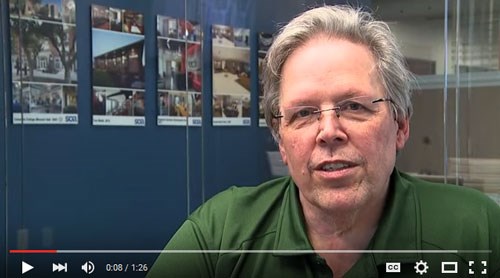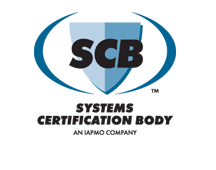For Lowest Costs, Water is the Natural Choice
Lower upfront costs:
• There’s a hydronic system for every budget
• Control initial cost through selection and implementation of technology
• Control cost through selection of components
• Control cost through the competitive bid process
Lower maintenance costs:
• Hydronic components are interchangeable
• Specialized technicians not needed
• Components and parts are readily available
• Water is stable and forgiving
Lower lifecycle cost:
• Hydronic systems are designed for the life of the building
• Easily upgradeable as new technology evolves
• True energy efficiency is unmatched
• Hydronic systems and components are proven to last longer
“I’d prefer a hydronic system, but it’s not in the budget.” That line, despite being inaccurate, is one that most engineers and installers have heard from a building owner. The fact is, there’s a hydronic system for every budget.
When designing a hydronic system, the first measure to control upfront cost is selection of technology. There’s a multitude of options when choosing how to condition a building with water. Radiant floors, walls, ceilings, panel radiators, chilled beams, water-source heat pumps and hydronic fan coils, just to name a few, offer a wide range of choices.
With VRF (variable refrigerant flow) systems, the few options available – primarily consisting of where the indoor unit is hung – offer almost zero variation in cost.
Hydronic systems offer yet another means of controlling first cost: specification of components based on price. Owners can bid a project out to several installing contractors, but just as importantly, each component within the system can be bid out as well. This is because hydronic system parts are interchangeable. For example, circulators are readily available from several manufacturers, and the designer can choose from dozens of boiler brands.
VRF systems are sold as a package. Nearly every component in the system is a proprietary element which has no substitute. And since technician training and certification is strictly brand-specific, it’s more difficult to bid the work competitively among installers.
Lower maintenance costs
For building owners, HVAC system service and repair is an unpleasant inevitability. Over the life of a building, the type of system installed makes a huge difference in the cost of ownership. Avoiding unnecessary costs, maintenance issues and obsolescence should be as much a deciding factor as comfort, efficiency and initial cost. Fortunately, hydronic systems perform best on all counts.
A hydronic heating and cooling system is an upgradeable, expandable investment that allows for future compatibility. In stark contrast, VRF (variable refrigerant flow) system equipment includes components with long lead times, if components are even available or backwards compatible, due to changes in technology or refrigerants.
Because hydronic components are ubiquitous, have lower costs and greater availability, an increased speed of repairs is standard. Also, any HVAC technician can service any brand of equipment. This means competition and competency. But the very nature of a hydronic system inherently makes for faster repairs when compared to a VRF system.
Water is forgiving. Refrigerant is not. In the event of a water leak, it’s easy to find and fix quickly. Just look for the damp spot on the mechanical room floor. A refrigerant leak is virtually impossible to find because as soon as refrigerant escapes the pipe and hits the atmospheric pressure of the room, it vaporizes.
In addition to potential health, safety and environmental implications, leaking refrigerant is a big expense. Your options are to keep adding refrigerant charge, replace the entire system, or at the very least replace the costly field-installed refrigerant piping.
Hydronic systems last longer
Folks in the HVAC industry can be heard referring to the New England states as “Boiler Country”, and for good reason. There, you’ll find big, cast-iron radiators still comfortably and efficiently heating homes and businesses after nearly a century. While the boiler most likely has been replaced, the original piping and radiators are still in use. Over the decades, that robust technology has evolved into the rock-solid, super-efficient equipment that’s used in the cutting-edge hydronic applications of today.
ASHRAE Handbook, “Chapter 37: Owning and Operating Costs” states that air source commercial heat pump systems (yesterday’s VRF) are rated for a 15-year service life. But today, VRF units have inverter scrolls operating at high RPM, especially in heating mode and at high or low outdoor temperatures, which shortens the life of the compressor. Because these new VRF compressors haven’t been around as long, there’s no definitive answer as to the length of their service life. They’re also significantly more expensive than their predecessors. Even if VRF systems were as efficient and comfortable as hydronic systems, nothing ruins ROI like a seven to 15 year service life. There are currently no VRF units backward compatible to seven year old units.
Commercial hydronic chiller and boiler systems have a combined average life of 23 years, a nearly 35 percent longer life cycle, and many last longer than that - perhaps in your own buildings.
By providing the best ROI, water always wins. Think hydronic.
 OHM Professional Offices
OHM Professional Offices
One-Pipe WSHP 12,000 sq. ft. office
Watch 2015 MCPA Winner - Owner's Video
For more information, please contact the Radiant Professionals Alliance and the Hydronics Industry Alliance at (877) 427-6601 or info@HIA-C.org
Water-based HVAC Systems Are Naturally:
Hydronic systems use fluid or steam as the medium for the final heat-transfer

































